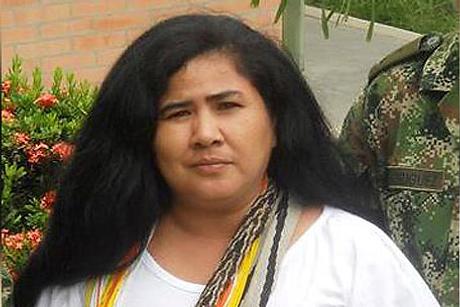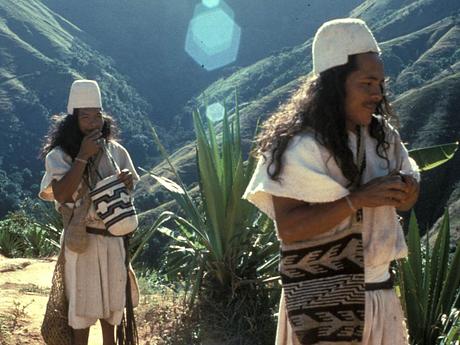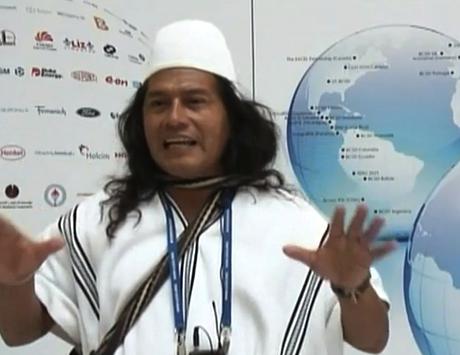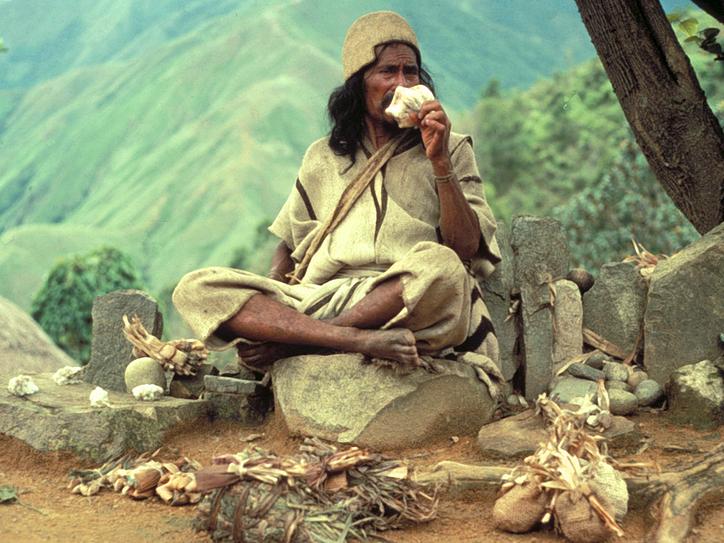Land's rich resources attract outside threat
The Indians of the Sierra Nevada are four unique, related tribes who live on the slopes of the Sierra Nevada de Santa Marta in northern Colombia.
But the natural wealth of their land is attracting damaging “development” projects.
The Sierra Nevada de Santa Marta is a unique pyramid-shaped mountain on the northern tip of the Andes in northern Colombia. On its slopes live four separate but related peoples: the Arhuaco (or Ika), Wiwa, Kogi, and Kankuamo. Together they number more than 30,000.
The mountain’s peak is over 5,000m high. Rising from the shores of the Caribbean, the lower plains are clad in tropical forest, turning to open savannah and cloud forest higher up.
To the Indians, the Sierra Nevada is the heart of the world. It is surrounded by an invisible ‘black-line’ that encompasses the sacred sites of their ancestors and demarcates their territory.
Older brothers
The Sierra Indians call themselves ‘the older brothers’, and believe that they have a mystical wisdom and understanding which surpasses that of others. They refer to outsiders as ‘the younger brothers.’
 © Danilo Villafañe
© Danilo Villafañe
The older brothers believe it is their responsibility to maintain the balance of the universe. When there are hurricanes, droughts, or famines around the world it is said that they are the cause of human failure to keep the world in harmony.
Balance is achieved by making offerings to the sacred sites to give back to the earth what is taken out of it.
Mamos
 © Survival
© Survival
Spiritual leaders are called Mamos. The Mamo is charged with maintaining the natural order of the world through songs, meditations and ritual offerings.
Mamo training begins at a young age and continues for around 18 years. The young male is taken high into the mountains where he is taught to meditate on the natural and spirit world.
In Western culture, the Mamo could be seen as the priest, teacher and doctor, all rolled into one.
Coca vs cocaine
 © Danilo Villafañe
© Danilo Villafañe
The coca leaf plays a central role in daily life and is used in offerings and ceremonies.
Each man carries a bag of the leaves, which are chewed to create a mildly stimulating effect. When two men meet, a handful of leaves is exchanged as a sign of mutual respect.
A hollowed-out gourd called a ‘poporo’ contains crushed seashells. A stick is used to transfer the powder to the wad of coca in the mouth – the highly alkaline shells react with the coca to stimulate its active ingredients. Surplus powder is rubbed on the neck of the poporo – over time, this becomes a thick collar.
 © Danilo Villafañe
© Danilo Villafañe
Coca is also grown by non-Indian settlers as the raw material for cocaine. Colombia has long been dubbed the cocaine capital of the world, and its production has had devastating consequences for the indigenous population.
The lower slopes of the Sierra have been occupied by colonists growing coca for the drug trade that funds much of the armed conflict between guerrilla groups and paramilitaries in the country’s long-running civil war.
Despite the Indians’ peaceful nature, they have frequently been caught in the crossfire between the army and illegal armed groups, and many have been killed or forced to flee from the quasi-civil war raging on their land.
Keep off our land!
 © Yezid Campos/Survival
© Yezid Campos/Survival
The Sierra Indians are descendants of the Tairona, a great civilization whose masterful gold work and architecture draw tourists and grave robbers alike to the region.
Each tribe has adapted to the invasion of their lands in its own ways: the Kogi shunned outside invasion by fleeing higher up the Sierra. They have remained particularly averse to visits from camera-toting tourists.
The Arhuaco, whose men are distinguished by their white conical hats, organized a strong political movement to defend their rights, while the Kankuamo living on the lower foothills were almost entirely integrated into mainstream society.
Water
Water is highly revered by the Indians and there is strong opposition to existing and planned hydroelectric dams in the region. Dams interfere with the natural water cycle of the Sierra and threaten the tribes’ crops and livestock.
Privately owned land and development projects are making it increasingly difficult for the Indians to move within their ancestral territory and make offerings to keep the world in balance.
Act now to support the Sierra Nevada Indians
Join the mailing list
There are more than 476 million Indigenous people living in more than 90 countries around the world. To Indigenous peoples, land is life. Find out more about them and the struggles they’re facing: sign up to our mailing list for occasional updates.
News from the Sierra Nevada Indians

Colombia: Sierra Nevada Indigenous leader murdered
A leader of the Wiwa tribe and a campaigner for both Indigenous and women’s rights has been killed.

Tragedy strikes Colombia’s Sierra Nevada Indians
In a tragic week, Kogi, Wiwa and Arhuaco Indians have been killed in three separate incidents.

Game of Thrones star speaks out over Colombian killing
Game of Thrones star Natalia Tena has lent her support to bring the killers of Colombian Indian leaders to justice.

Colombian Indian leader escapes assassination attempt
Mr Rogelio Mejía was accompanied by a Survival researcher at the time of the attack by gunmen
Two Arhuaco children killed by army shells
Two Arhuaco children have been killed after playing with unexploded shells left by the Colombian army.
Indians beheaded in Sierra Nevada
Two Arhuaco Indians from northern Colombia have been found beheaded after being seized by right-wing paramilitaries.

